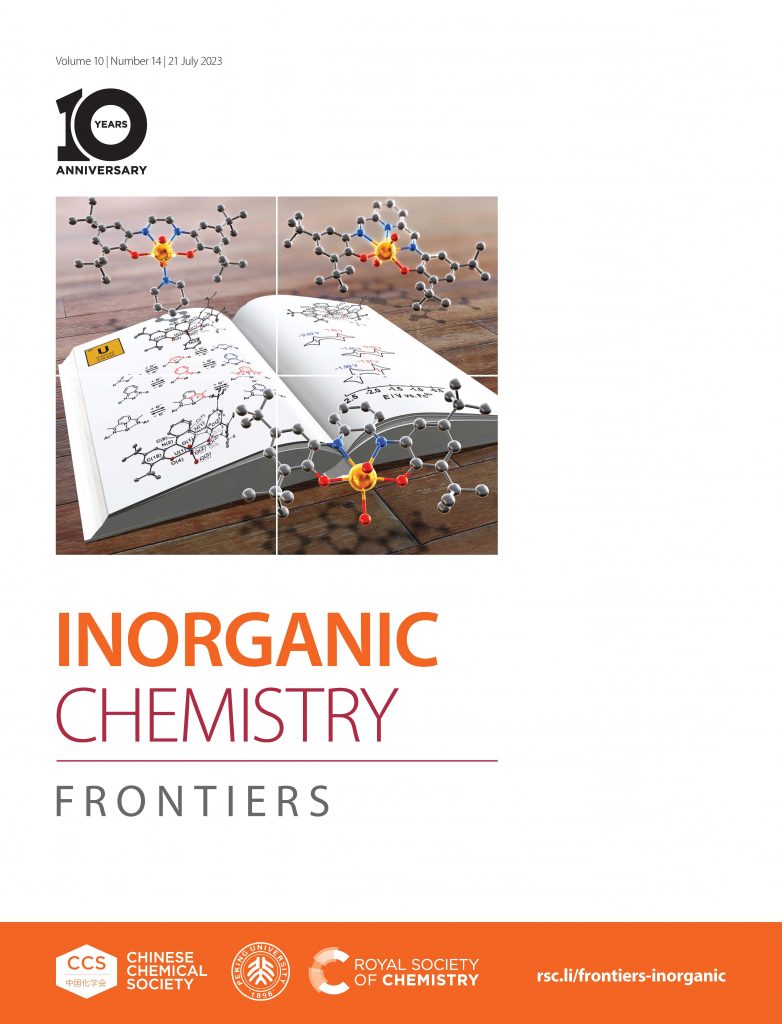2023.07.26
[Paper]”Utility of redox-active ligands for reversible multi- electron transfer in uranyl(VI) complexes” published by WRH professors Satoru Tsushima and Koichiro Takao
WRH Specially Appointed Associate Professor Satoru Tsushima (Helmholtz-Zentrum Dresden-Rossendorf), Associate Professor Koichiro Takao (Institute of Innovative Research), et al. published a paper in the Inorg. Chem. Front journal and their paper was also used as the front cover of Vol.23 of the journal.
“Utility of redox-active ligands for reversible multi-electron transfer in uranyl(VI) complexes”
https://doi.org/10.1039/D3QI00189J

【Abstract】
Utility of redox-active ligands for reversible multi-electron transfer in uranyl(VI) complexes†
Tomoyuki Takeyama, Satoru Tsushima and Koichiro Takao
In most cases, the redox activity of a UVIO22+ complex is regarded as metal-centered phenomena, because uranium has small energy gaps amongst the 5f/6d/7s subshells, thereby exhibiting a wide range of oxidation states, commonly from +III to +VI or in some cases even +I or +II. While a wide variety of redox-active ligands are known for use as transition metal complexes including multi-electron reduction that could facilitate inert bond or small molecule activation, only a few such examples are known for UVIO22+. In this study, three UVIO22+ complexes bearing α-diimine-, o-quinonediimine- and 2,6-diimino-pyridine-based ligands were synthesized, which exhibited two redox couples in the range of −0.79 V to −2.02 V vs. Fc +/0 to give singly- and doubly-reduced complexes by stepwise reduction. Unique electronic transitions of UVIO22+ complexes with a variety of low-lying excited states helped us to combine spectro-electrochemistry and time-dependent density functional theory (TD-DFT) calculations which comple-mented each other to assign the redox-active site in these UVIO22+ complexes, i.e., whether or not a ligand of interest becomes redox-active. During all the redox processes observed here, the ligands employed are found to be exclusively redox-active, i.e., non–innocent, whereas the centered UVIO22+ is just “spectating”and remains unchanged, i.e., innocent. Whereas the double reduction of the UVIO22+complexes usually involves breaking of strong UuO bonds, in the present examples this is not required and therefore a basis for the synthesis of new types of uranium molecular catalysts and magnetic materials may be found.

